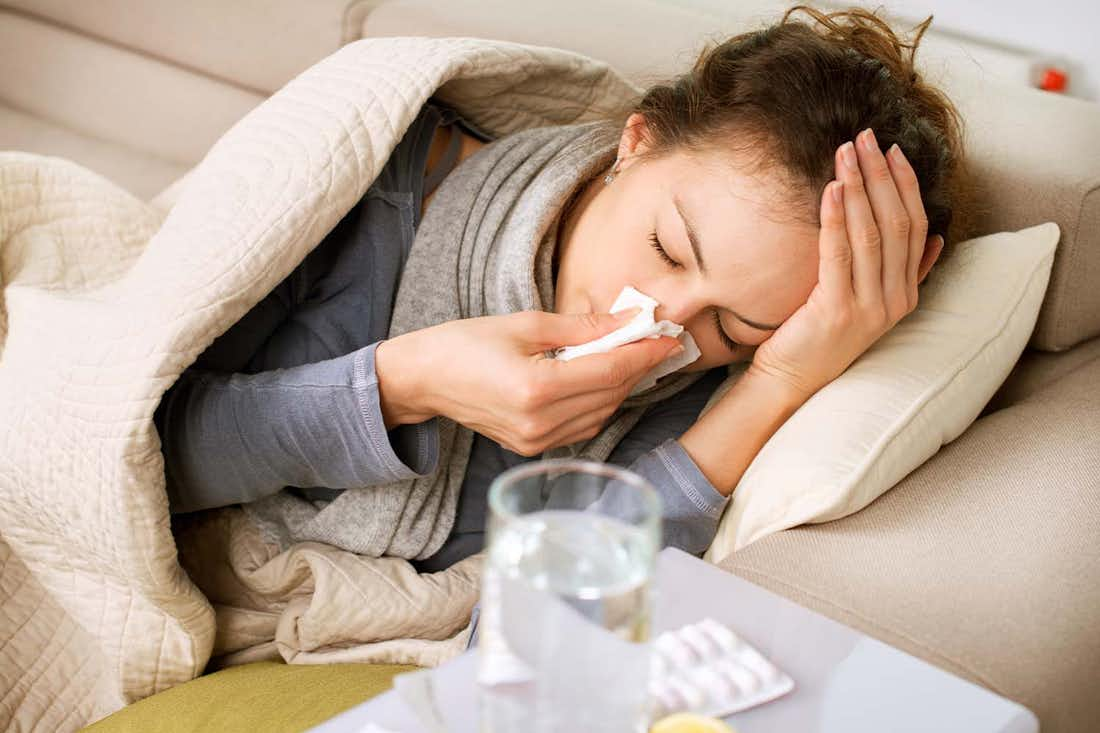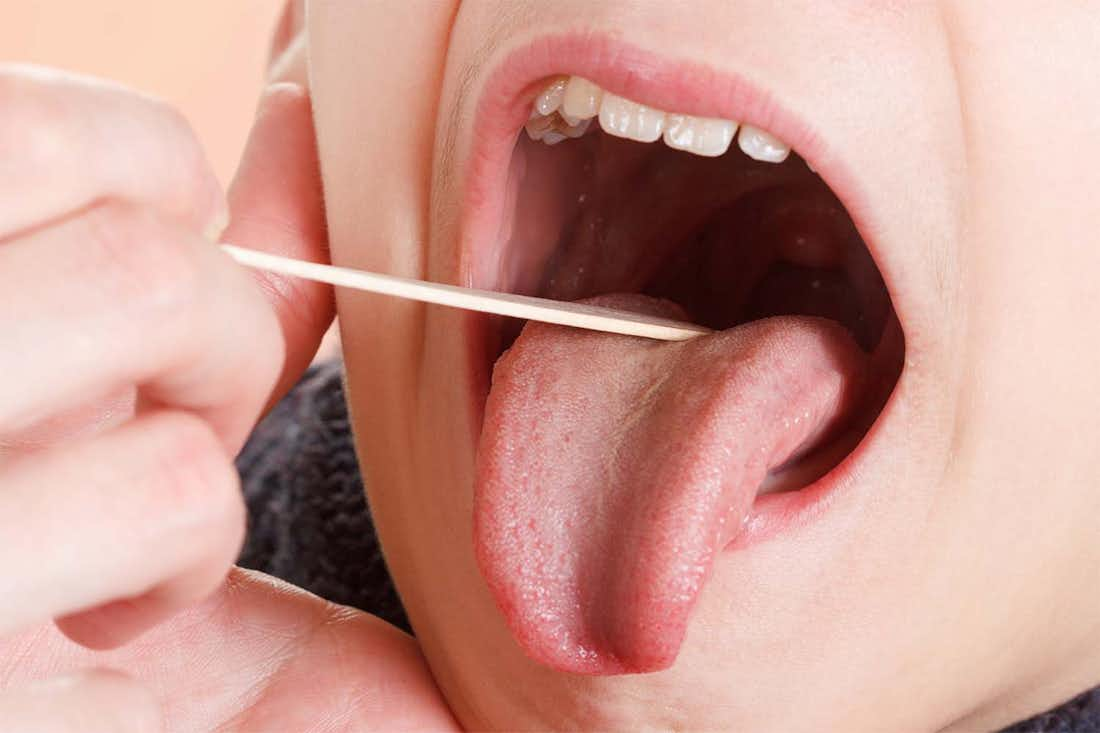Mar 23, 2022
Hives vs. Rash: What's the Difference?
5 minute read
Getting some red marks on your skin is a pretty common occurrence for most people. And while these symptoms can make your skin itch and your eyes twitch, it’s often just the result of an allergic reaction.
But what are you even supposed to call this phenomenon? Is it a rash? Is it hives? How do you tell the difference, and is one more dangerous than the other? How can you get rid of them, and what causes them in the first place?
You’ve got lots of questions, but we’ve got lots of answers. Let’s look at everything you need to know to understand the difference between hives and rashes.
What Are Hives?
Hives, or urticaria, are red, itchy welts resulting from a skin reaction. In most cases, hives are caused by an allergic reaction. Things like medications, topical creams, insect stings, infection, or even sunlight can cause acute hives to occur. Acute hives are temporary and usually only last for as long as the trigger is present in or around the affected area.
Chronic hives can occur if the welts appear for more than six weeks and frequently occur over months or years. In most cases, the cause of chronic hives is not well understood.
With that said, hives tend to flare up with triggers like heat or exercise, as well as increased stress. Those with chronic hives may experience unpredictable flare-ups for more than six weeks, sometimes for months or years.
What Are the Symptoms of Hives?
Understanding what hives look like can help you better differentiate them from rashes. Symptoms of hives usually present as just physical abnormalities, but they may cause decreased self-esteem and anxiety:
- Clusters of red or skin-colored welts (wheals)
- Welts that vary in size, change shape, and appear and fade repeatedly until the reaction has ended.
- Painful swelling of the lips and eyelids can also occur when the hive happens to be in on the eyelid or lip
- Itching, which can range from mild to severe
While hives themselves do not cause an allergic reaction, they are often the byproduct of an allergic reaction. In most cases, these do not pose any real threat to your health. However, hives sometimes co-occur with a potentially life-threatening allergic reaction called anaphylaxis.
Anaphylaxis is an extreme immune response to an allergen in which a flood of chemicals are released, lowering blood pressure and increasing heart rate. It can cause you to lose consciousness or even experience organ failure. If you experience hives as part of a severe allergic reaction, it is essential to seek emergency care.
What Is a Rash?
Rashes, also known as dermatitis, are irritated or swollen skin areas. Rashes are itchy, painful, red, or scaly, and they can even result in blisters or patches of raw skin. A number of different medical problems can cause rashes.
In most cases, people experience a rash because of skin irritation or sensitivity due to coming into contact with an irritant. This can occur when certain substances damage the skin cells in an area, such as touching poison ivy or using an abrasive new body wash. However, it can also result from illness, such as measles or shingles.
There are a few different types of rashes:
- **Atopic Dermatitis - **This is one of the most common causes of a rash, and it’s often referred to as eczema. Chronic eczema is common and inherited in families.
- **Seborrheic Dermatitis - **This is a common skin condition that mainly affects your scalp, leading to scaly and dry patches that result in dandruff flakes. This can also affect oily areas of the body like your face, sides of the nose, or eyebrows.
- **Contact Dermatitis - **This type of dermatitis is caused by direct contact with substances. Contact dermatitis is one of the few types of rashes that an allergic reaction can cause. It’s often caused by metallic jewelry but can also be caused by soaps or cosmetics with fragrances and added dyes.
What Are the Symptoms of Rashes?
Rashes can look a little different from person to person, but in general, the symptoms include:
- Red, dry, itchy skin
- Painful blisters at the site of the rash
- Peeling or flaky skin
Even though rashes can itch like crazy, you should do your best not to scratch or pick at them. This can create an open wound, which will make you more susceptible to developing an infection.
What Are the Main Differences Between Rashes and Hives?
Now that you’ve got the basics down and understand what each of these skin conditions looks and feels like, let’s see how they differ.
Symptoms
One of the main reasons so many people get hives and rashes confused is that they present themselves very similarly. In most cases, both hives and rashes result in red, itchy skin in certain areas of the body. However, some symptoms can help you differentiate the two.
Namely, hives typically result in raised bumps on the skin called wheals, resulting from an allergic reaction. On the other hand, rashes are usually flat, blotchy, or scaly but can be raised at times.
Additionally, hives generally appear in any area of the body if you’ve been exposed to an allergen. For instance, if you consume a food that you’re allergic to, you might experience hives on your arms, your back, or even your legs.
On the other hand, rashes usually only occur at the site of irritation. In other words, if you use a new lotion on your face and notice red patches only on the applied areas, then you probably have a rash. One trait that can help differentiate hives from other skin rashes is that hives typically appear and then disappear relatively quickly wihtout leaving a mark or scar. On the other hand, rashes do not tend to come and go in this manner.
Causes
The causes of each of these skin conditions can also mark them as disparate. The main difference is that hives are often caused by allergies, whereas irritants cause rashes.
Pollen, insect stings, foods, or medicines can cause the body to experience an allergic reaction. Your body stores histamine inside its cells, and when your immune system perceives a threat, such as an allergen, it releases this chemical, among others. After the body mistakenly releases histamine, it can lead to an allergic reaction that results in raised bumps on the skin or hives.
On the other hand, rashes can be caused by all sorts of things, though they are usually not caused by an allergic reaction. Instead, they are usually caused by your skin’s reaction to an irritant or infection for example.
Typically, the rash results from damaged skin cells due to abrasion or irritation from an external substance. These substances can change the properties of the outer layer of skin that act as a protective barrier against toxic substances. Not to mention, some substances remove natural oils from the skin’s surface, leading to dryness and cracking, which can result in a rash.
Diagnosis
Since different stimuli cause hives and rashes, they also require different methods of diagnosis. Since an allergic reaction often causes hives, it is common for doctors or allergists to give you an allergy test.
Not only will this reveal whether or not your hives are due to an allergen, but they’ll also reveal _what _exactly you are allergic to. In fact, an allergy skin test relies on your body’s production of wheals, a type of hive, to examine how severely you might be allergic to a given substance.
But you don’t need to go to an allergist’s office to find out what’s causing your skin reaction. Cleared’s at-home allergy test lets you scan for 40 different indoor and outdoor allergens without ever needing to leave the comfort of your home.
Rashes, on the other hand, are a bit trickier to diagnose since they can be caused by all sorts of medical conditions. However, a doctor will likely do a visual examination combined with a physical examination to pair your rash with some of your other symptoms, such as fever or difficulty breathing.
They may also take a swab of the rash if they suspect it might be caused by a viral or fungal infection, as they can send the swab to a lab for further analysis.
What Are the Treatment Options for Hives and Rashes?
Once you know whether or not you have a rash or hives, the treatment options tend to become pretty clear.
Treating Hives
For mild hives, you can often treat the symptoms with at-home remedies.
Using a cold compress is a common avenue that many people use to alleviate their hives. The cold temperature helps reduce swelling, bringing down the welts and alleviating itching or discomfort. Additionally, as long as the hives are sealed and aren’t blistering, you can use anti-itch creams to enhance your comfort.
If your hives don’t go away on their own within a few days, or if they are co-occurring with severe symptoms, you should see a doctor. If the culprit is an allergic reaction, they’ll likely focus on treating the allergies so that the hives cease to exist.
An allergist might prescribe antihistamine medications, which work to block the effects of histamine, a chemical that causes allergy symptoms. However, a doctor might even recommend allergy immunotherapy to bring relief to your allergies and eliminate the need for antihistamines in the first place.
Immunotherapy involves exposing your body to small amounts of an allergen over time so your immune system can build up a tolerance. At the end of treatment, you may be less inundated by allergy symptoms without the need for antihistamines.
Take your free allergy consultation today to see if immunotherapy is recommended as part of your personalized treatment plan.
With this said, if you have chronic hives without a known cause, your doctor might recommend an injectable medication called omalizumab. This is a medication typically used to treat asthma symptoms, but it’s been shown to be effective at treating urticaria.
In a clinical trial, nine out of 11 patients with urticaria experienced complete resolution of their symptoms after about nine weeks of omalizumab treatment.
Treating Rashes
The treatment for a rash is highly dependent on the cause of the rash in the first place. A doctor’s focus will be to eliminate the cause of the rash so that this symptom no longer occurs.
With that said, dermatitis can often not be “cured,” though you can take steps to manage the symptoms. You can use over-the-counter medications or creams to reduce itching and discomfort for atopic dermatitis. Additionally, if you know what’s causing your flare-ups, you can try your best to avoid the triggers, to begin with.
The best course of action for contact dermatitis is to avoid what causes your triggers. It’s wise to wear long sleeves when hiking or backpacking through the wilderness to avoid irritation from poison. If a new body wash is causing a rash, don’t use it anymore.
If you have sensitive skin that tends to flare up when you use new skincare products, it might be smart to use a small amount of a new product in a discreet location before applying it generously.
For instance, put a small amount of a new facial moisturizer on the back of your hand to see how it reacts before applying it to your face as normal.
Are Hives and Rashes Contagious?
If you’ve got yourself a case of hives or rashes, you might be worried about spreading the discomfort to people around you. While a hive or a rash itself is not spread from person to person, the underlying cause_ _of the irritation might be transferable.
For instance, if your hives are caused by an infection such as strep throat, you can spread this virus to someone else near you. While you might spread this rash through physical touch, you can also spread viruses through airborne droplets by just talking or breathing in close proximity to another person.
Common causes of hives or rashes that are contagious include:
- COVID-19
- Strep throat
- Poison Ivy
- Chickenpox and shingles
- Cold sores
- Scabies
- MRSA
- Impetigo
- Ringworm
- Molluscum Contagiosum
If you have a rash or hives, it’s best to limit your contact with others until the symptoms subside to ensure that you don’t infect anyone around you.
Are Hives and Rashes Dangerous?
Hives or rashes themselves are not dangerous, but the reason behind each of them may be a cause of concern in some circumstances. Specifically, if an allergen causes your reaction, you need to be careful of anaphylactic shock.
Anaphylaxis is an extreme immune response to an allergen that results in low blood pressure and rapid heart rate. If left untreated quickly, it can lead to organ failure and even death. Hives often co-occur alongside this type of reaction, so if you experience a change in your skin, be sure to monitor your symptoms.
If you do experience anaphylactic shock, you’ll need a shot of epinephrine from a device called an EpiPen. You’ll point the orange end of the device to your outer thigh and press down firmly, allowing the epinephrine to enter your bloodstream and cease the allergic reaction.
A good way to remember the orientation of the device is to think, “Blue to the sky, orange to the thigh.”
Even if your symptoms start to subside, you’ll still require emergency care at a hospital. Make sure you’re able to safely get yourself to one by having someone else drive you or by calling an ambulance, as your reaction may return.
In Conclusion
Hives and rashes are two terms often used interchangeably because they share similar symptoms. While both result in red, itchy patches of skin, there are some key differences to understand so that you can get the best course of treatment.
For one, hives are typically caused by an allergic reaction, whereas an irritant often causes rashes. Hives are raised bumps on the skin, whereas rashes are typically flush. Finally, the cause of hives can be diagnosed through an allergy test, but rashes are diagnosed through physical examinations.
Treating each of these skin conditions involves treating the underlying condition causing the rash. Either way, that underlying condition can be contagious, so it’s a good idea to check in with a doctor if you’re worried.
If you keep getting hives, but you just can’t figure out why, your online allergist is in and ready to help. Take your free allergy consultation with Cleared to take one big step towards the b b b you need.
Sources:
Chronic Hives | The Mayo Clinic
Anaphylaxis - Symptoms and causes | The Mayo Clinic
Hives: Causes | American Academy of Dermatology Association.
Dermatitis, Irritant Contact : OSH Answers | Canadian Centre for Occupational Health and Safety.
Omalizumab for urticaria treatment in clinical practice: a case series | NCBI



